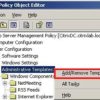This article was updated on January 5, 2009.
Will a stand-alone Citrix License Server running in a Workgroup service the licensing requests for XenApp Servers running in multiple farms in multiple directory service systems? Someone asked me this question and my first thought was yes it would. But would it?
NOTE: Most people believe that XenApp can only be installed on a network that uses either Active Directory or eDirectory. That is not true. XenApp can be installed on a stand-alone workgroup computer, as well as UNIX versions for Solaris, AIX, and HP-UX.
This test will need five servers running Windows Server 2003 R2 x86 with all Windows Updates. The License Server will be a stand-alone server in a Workgroup. Microsoft Active Directory will be used for the Directory Service. Two Forests, each with one domain, will be built. One XenApp Server will be in each Domain as domain members.
Two server Virtual Machines (VM) were built for the first Forest/Domain. The Forest/Domain is called DomainA.com, with a Domain Admin account named AdminA with a password of P@$$w0rdA.
Two server VMs were built for the second Forest/Domain. The Forest/Domain is called DomainB.net, with a Domain Admin account named AdminB with a password of P@$$w0rdB.
The License Server was built as a stand-alone server in a Workgroup named Citrix with a local administrator account named AdminC with a password of P@$$w0rdC. The License Server is version 11.5.
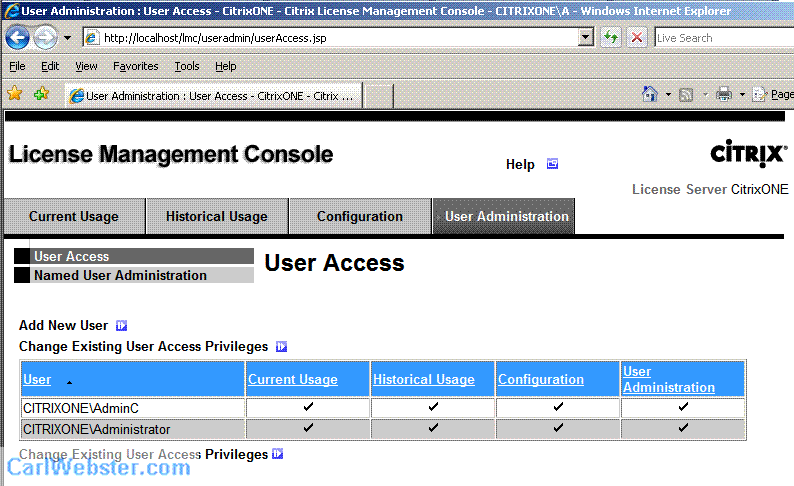
Different user names and passwords were used to verify that the license server does no authentication of user credentials when checking out licenses.
The XenApp Server in DomainA is named CitrixA and the server in DomainB is named CitrixB.
A DNS “A” record was created in each domain for the name of the Citrix License Server, CitrixONE.
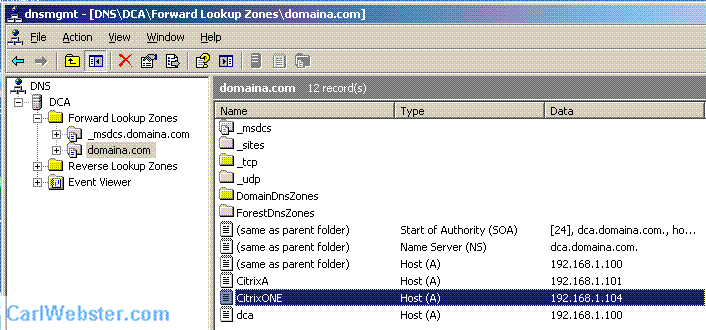
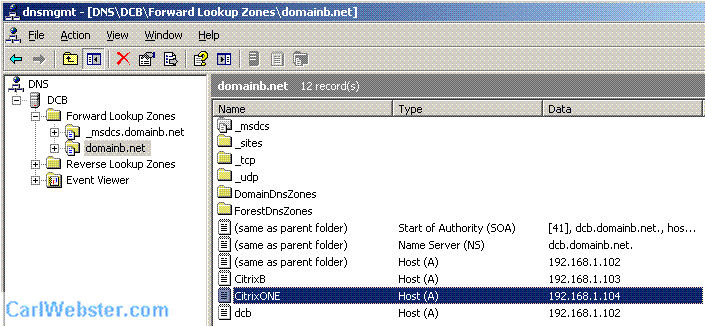
When XenApp is installed, one of the questions asked is the hostname of the license server.
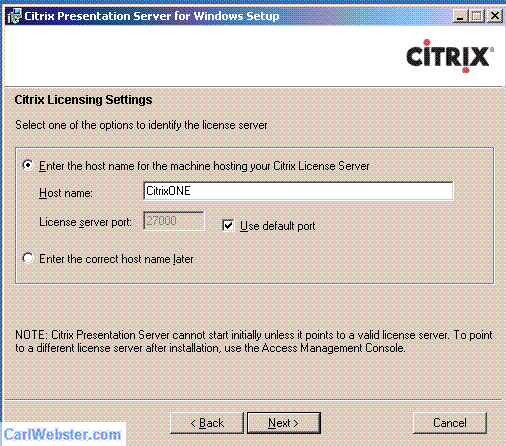
The installer needs to be able to resolve the name to an IP address. If there is no DNS record for the license server, name resolution fails and you receive an error message that the license server cannot be contacted.
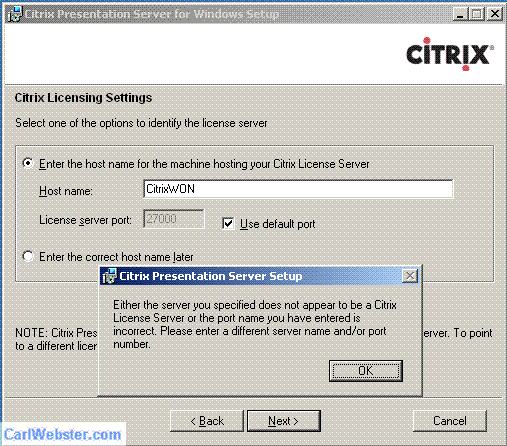
The Citrix Farm in DomainA is named FarmA, the Farm in DomainB is named FarmB. Both XenApp servers are running XenApp 5 for Server 2003 – Platinum Edition with Hotfix Rollup Pack #3.
On CitrixA the Notepad text editor was published and on CitrixB, Microsoft Paint was published.
To begin the test both CitrixA and CitrixB were powered off.
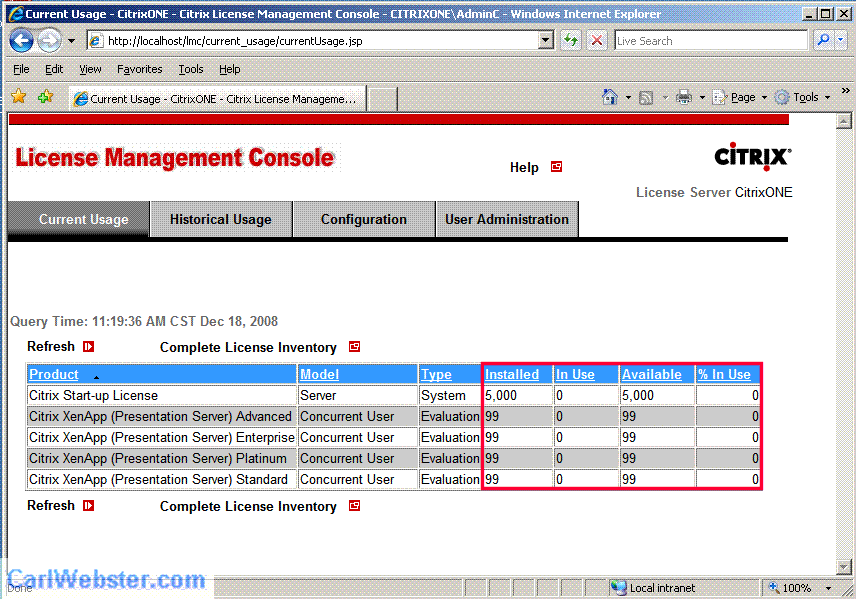
This screen shows no Server Start-up licenses or Citrix XenApp Platinum licenses checked out.
CitrixA in DomainA.com was then powered on.
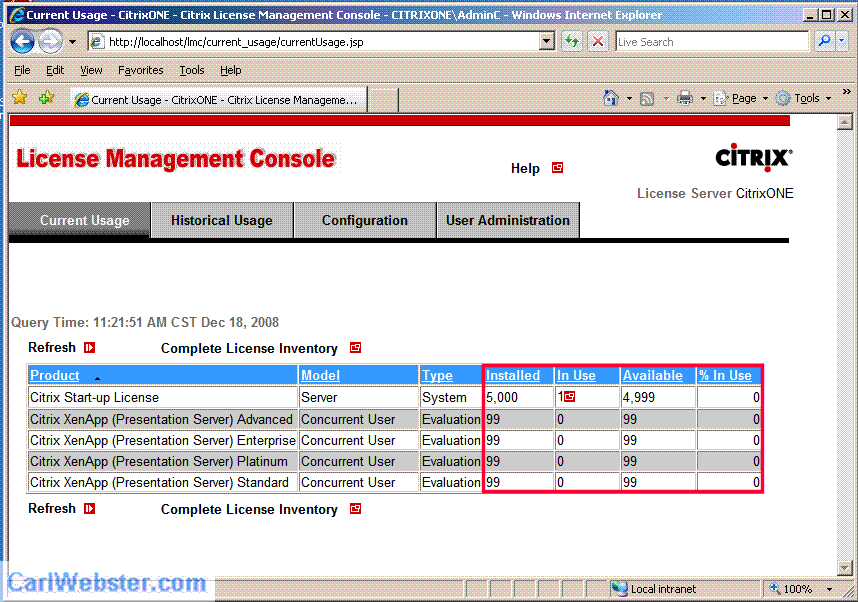
This shows that one Citrix Start-up License has been checked out.
CitrixB in DomainB.net was then powered on.

This shows that two Citrix Start-up licenses have now been checked out. Click the box next to the number 2 in the In Use column to get a detailed usage report on the checked out licenses.
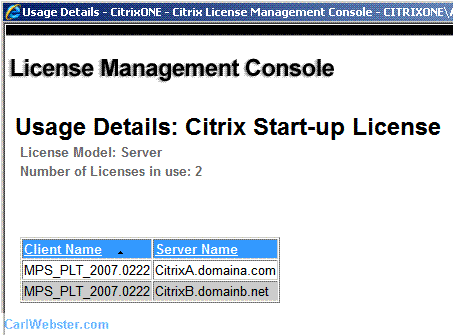
Here you see the Fully Qualified Domain Names of the two XenApp servers.
Program Neighborhood was used to run the Notepad published application on CitrixA.
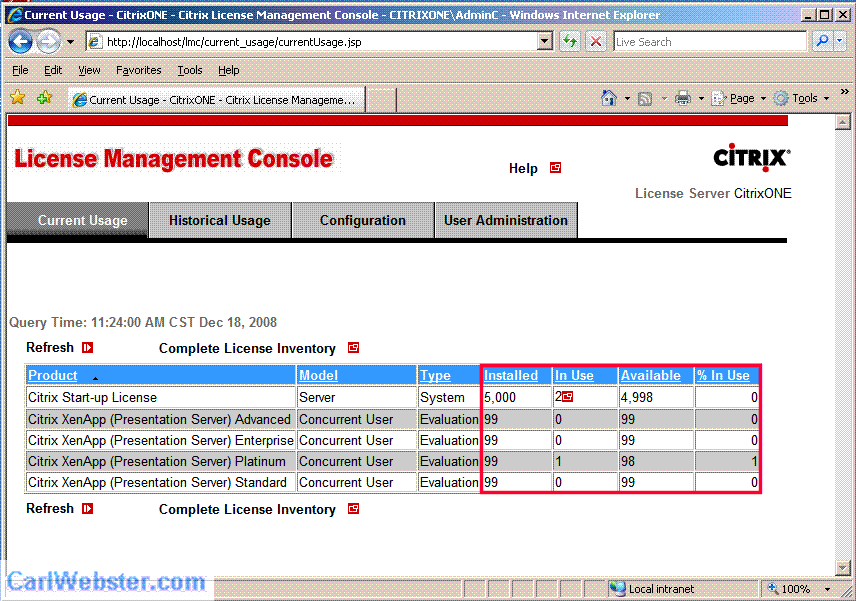
This shows that one Citrix XenApp Platinum Concurrent User license has been checked out.
Program Neighborhood was used to run the Paint published application on CitrixB.
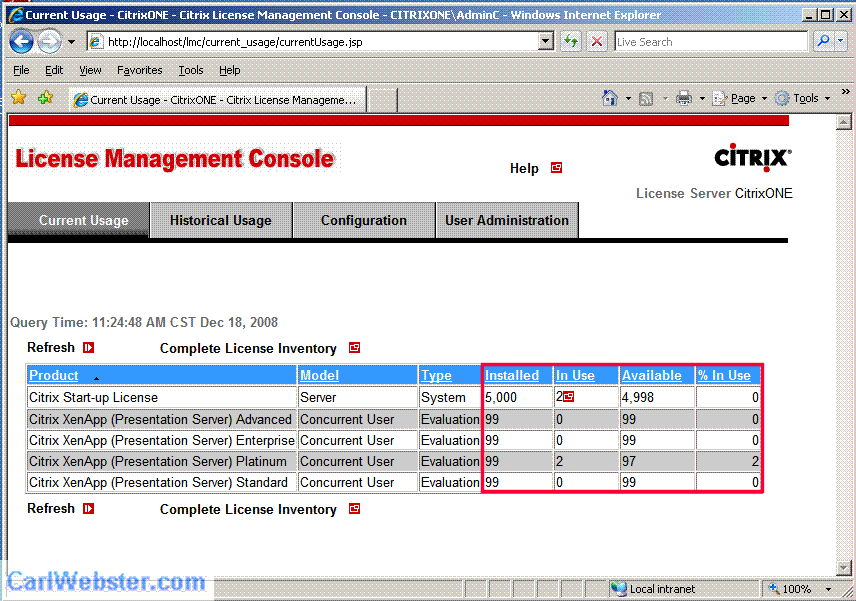
This shows that two Citrix XenApp Platinum Concurrent User licenses have been checked out.
Will a stand-alone Citrix License Server running in a Workgroup service the licensing requests for XenApp Servers running in multiple farms in multiple directory service systems? Yes.
It does not matter what user accounts were used in installing the Citrix License Server or XenApp 5. It does not matter what user accounts are set up on the license server or used to run the published applications. The Citrix License Server simply listens, by default, on TCP Port 27000 for license requests. If the license server has the licenses for the Citrix product being requested and has available user licenses, a license is checked out.
